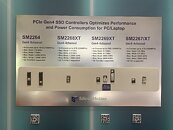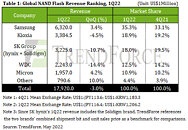Server DRAM Will Overtake Mobile DRAM in Supply in 2023 and Comprise 37.6% of Annual Total DRAM Bit Output, Says TrendForce
Since 2022, DRAM suppliers have been adjusting their product mixes so as to assign more wafer input to server DRAM products while scaling back the wafer input for mobile DRAM products. This trend is driven by two reasons. First, the demand outlook is bright for the server DRAM segment. Second, the mobile DRAM segment was in significant oversupply during 2022. Moving into 2023, the projections on the growth of smartphone shipments and the increase in the average DRAM content of smartphones remain quite conservative. Therefore, DRAM suppliers intend to keep expanding the share of server DRAM in their product mixes. According to TrendForce's analysis on the distribution of the DRAM industry's total bit output for 2023, server DRAM is estimated to comprise around 37.6%, whereas mobile DRAM is estimated to comprise around 36.8%. Hence, server DRAM will formally surpass mobile DRAM in terms of the portion of the overall supply within this year.



































